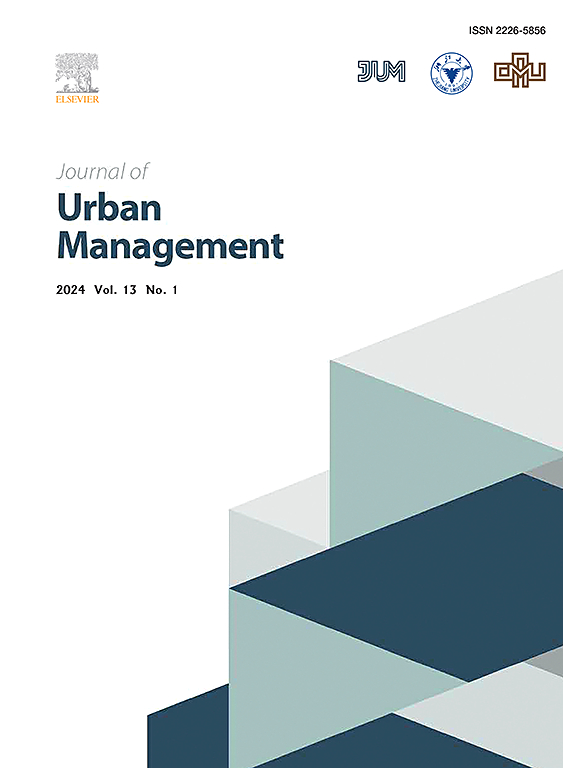Associating COVID-19 prevalence and built environment design: An explainable machine learning approach
IF 5
2区 社会学
Q1 URBAN STUDIES
引用次数: 0
Abstract
Stay-at-home orders were globally adopted as one of the most important nonpharmaceutical interventions (NPIs) during the recent global pandemic. In a high-rise high-density context of Hong Kong, inter-building airborne transmissions were reported, especially in public housing. The role of residential building design in infection dynamics is under-studied. To unravel how architectural and urban design was linked to airborne virus transmission during the pandemic, we fitted explainable machine learning (EML) models associating COVID-19 prevalence with architectural design controlling for other built environment (BE) factors including socio-demographics, road information, land use, and points of interest (POIs). 284 public housing that underwent restriction-testing declaration (RTD) during the peak period of the pandemic's fifth wave were our sample. An additional 35 RTD-issued private housing blocks were used for an initial comparison of infection prevalence across public and private housing. Our findings show a significant differential in prevalence over different design forms, with "8-" and "L-" shaped buildings appearing to be more susceptible, with a significantly greater percentage of infections than "X-" and "Y-" shaped structures. The percentage of vacant land, public residential within a 500-m buffer, and the proportion of children ages under 14 at small tertiary planning unit level (STPU) were the three most influential co-variates in our model. Among specific architectural design features, the number of floors, radial layouts, and building corners were the most significantly associated with COVID-19 prevalence, followed by building average flat (apartment) size and shape factor. The study indicates that public housing residents were more at risk during this wave of the pandemic, which needs further investigation. Using machine learning, we provide insights into how to manage the design of high density neighbourhoods for resilience against airborne disease vectors.
关联COVID-19患病率和建筑环境设计:一种可解释的机器学习方法
在最近的全球大流行期间,居家令被全球采纳为最重要的非药物干预措施之一。在香港的高层高密度环境中,有报告称建筑物间的空气传播,特别是在公共房屋中。住宅建筑设计在感染动力学中的作用尚未得到充分研究。为了揭示大流行期间建筑和城市设计如何与空气传播病毒联系起来,我们拟合了可解释的机器学习(EML)模型,将COVID-19的流行与建筑设计联系起来,控制其他建筑环境(BE)因素,包括社会人口统计学、道路信息、土地使用和兴趣点(poi)。以第五波疫情高峰期实施限制检测申报(RTD)的284套公共住房为样本。另外35个rtd发放的私人住房被用于初步比较公共和私人住房的感染流行情况。我们的研究结果显示,不同的设计形式在流行程度上存在显著差异,“8”形和“L”形的建筑似乎更容易受到感染,感染的比例明显高于“X”形和“Y”形的建筑。在我们的模型中,三个最具影响力的协变量是空地百分比、500米缓冲区内的公共住宅和小三级规划单位(STPU) 14岁以下儿童的比例。在具体的建筑设计特征中,楼层数量、径向布局和建筑角落与COVID-19患病率的关系最为显著,其次是建筑平均公寓(公寓)大小和形状因子。该研究表明,在这波大流行期间,公共住房居民面临的风险更大,这需要进一步调查。利用机器学习,我们提供了如何管理高密度社区设计以抵御空气传播疾病媒介的见解。
本文章由计算机程序翻译,如有差异,请以英文原文为准。
求助全文
约1分钟内获得全文
求助全文
来源期刊

Journal of Urban Management
URBAN STUDIES-
CiteScore
9.50
自引率
4.90%
发文量
45
审稿时长
65 days
期刊介绍:
Journal of Urban Management (JUM) is the Official Journal of Zhejiang University and the Chinese Association of Urban Management, an international, peer-reviewed open access journal covering planning, administering, regulating, and governing urban complexity.
JUM has its two-fold aims set to integrate the studies across fields in urban planning and management, as well as to provide a more holistic perspective on problem solving.
1) Explore innovative management skills for taming thorny problems that arise with global urbanization
2) Provide a platform to deal with urban affairs whose solutions must be looked at from an interdisciplinary perspective.
 求助内容:
求助内容: 应助结果提醒方式:
应助结果提醒方式:


